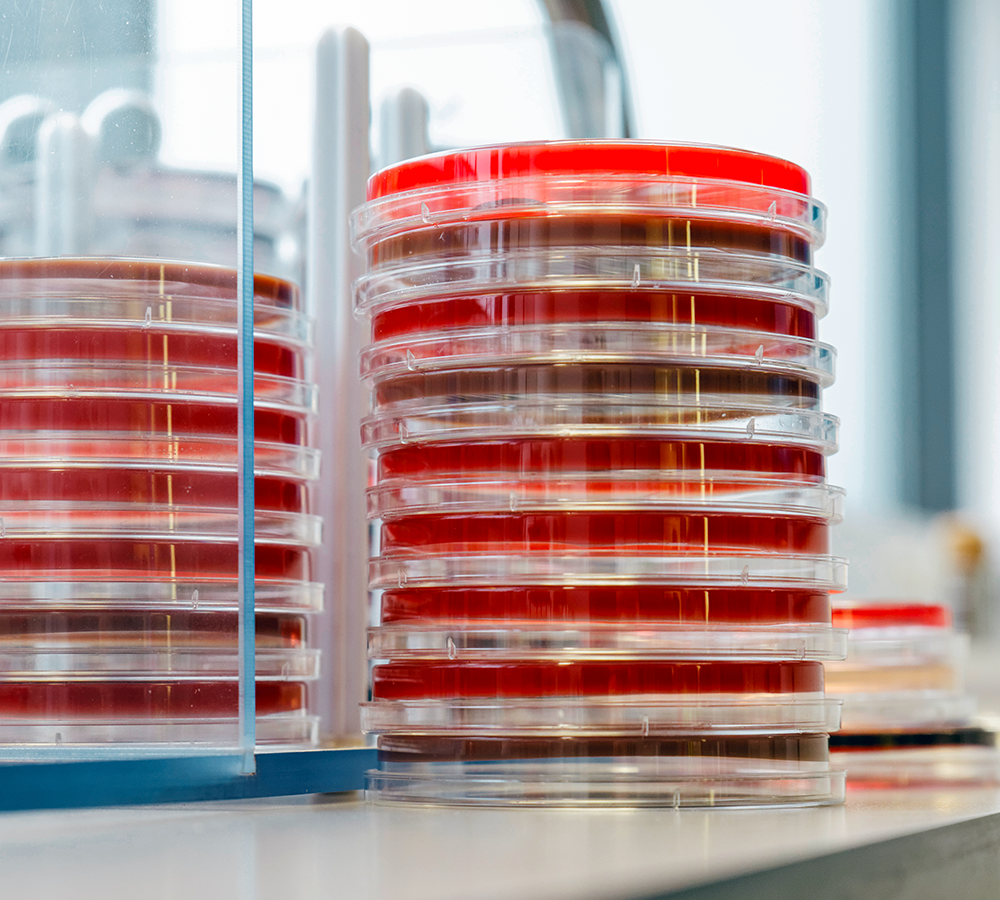
Use Case HELP
Guideline-based Use of Antibiotics in Infectious Medicine
Any treatment with antibiotics can promote the development of resistance in pathogenic microorganisms. It is therefore important to target the use of antibiotics in order to limit overtreatment and undertreatment. At the same time, bloodstream infections, including sepsis, are a widespread problem in hospitals, with the adequate use of antibiotics being a particular challenge.

Use Case HELP
Targeted use of antibiotics in staphylococcal bloodstream infections
Decision-making support for physicians in diagnostic and therapeutic steps via the HELP App
Avoidance of antibiotic-related multi-drug resistance and side effects
Participation of the University Hospitals Aachen, Essen, Halle and Leipzig under the leadership of the University Hospital Jena
Responsible treatment of staphylococcal infections
Inappropriate use of antibiotics can be particularly problematic in the hospital setting. The more often patients are exposed to an antibiotic, the more likely it is that resistance will develop. This can make antibiotic therapy ineffective. It also increases the risk of drug-related side effects.
On the other hand, the correct use of antibiotics can save lives in cases of blood poisoning. Bloodstream infections caused by the bacterium Staphylococcus aureus, for example, are often associated with complications and high mortality. Appropriate antibiotic therapy can reduce mortality from staphylococcal bloodstream infections by up to 50 percent.
However, when staphylococci are found in blood cultures, the medical significance of the finding is often questionable. In 75 per cent of the cases, it is not an infection but a subsequent contamination of the blood culture with coagulase-negative staphylococci. Unlike Staphylococcus aureus, these bacteria are part of the normal skin flora. Nevertheless, antibiotics are often administered in clinical practice when these staphylococci are detected.
In order to support hospital staff in the targeted diagnosis and treatment of staphylococcal bloodstream infections, the HELP App was developed as part of the clinical Use Case HELP in the SMITH Consortium. It serves as a decision support tool for treating physicians and guides them in the responsible use of antibiotics.
HELP App supports guideline-based antibiotic therapy
As part of HELP, a study was conducted at five German university hospitals in Aachen, Essen, Halle, Jena and Leipzig from 2020 to 2022. Jena University Hospital took the lead. The project was carried out in two phases: In the first phase, the HELP Manual was made available to clinicians as an electronic handbook. It provided information on the diagnosis and treatment of staphylococcal bloodstream infections and could be used as an app on stationary and mobile devices. In the second phase, the HELP App was to be developed as a medical device according to the European Union Medical Device Regulation.
In the first phase of the study, doctors used the HELP Manual as a decision support tool. If staphylococci were found in a patient’s blood culture at one of the five participating university hospitals, the treating physicians could use the HELP Manual as a progressive web application or download. This provided them with guideline-based information on the next diagnostic and therapeutic steps to improve patient care. Indirectly, this also aimed to prevent antibiotic-related multiresistance and optimise inpatient consultation by infectiologists. From August 2020 to the end of October 2022, all five university hospitals worked with the HELP Manual, with more than 130 wards and over 7800 patients included in the study. A digital survey on the use of the HELP Manual is currently being conducted at all participating sites. The results of the survey will be included in a publication of the overall results of the HELP study.
Provision of routine medical data by Data Integration Centres has been demonstrated
Another aim of the HELP Use Case was to validate the functionality of the Data Integration Centres established in SMITH. This involved making routine healthcare data accessible, ensuring its quality and using it in anonymised form for the study evaluation. At the Data Integration Centres, the data needed for the study were converted into an interoperable format and made available for research. The interoperable data format is based on the HL7 FHIR standard and the Core Data Set of the Medical Informatics Initiative. All five university hospitals have contributed HELP data to FHIR repositories. The main challenge was to extract the data from the heterogeneous primary care IT systems and make it available in FHIR. Data preparation and extraction took place both centrally at the Jena University Hospital and decentrally using analysis scripts at the Data Integration Centres of the sites.
The experience gained from the HELP project in the development of computer-based decision support systems is currently being evaluated. This includes, in particular, the specificities of medical device development in a university setting. These experiences have been incorporated into the follow-up project “fit4translation”, which addresses, among other things, the regulatory framework for the development of software as a medical device.
Major Publications:

“We want to support the work of infectiologists in normal and intensive care units with IT in order to optimize the use of antibiotics for specific bacteria.”
Prof. Dr. André Scherag
1st Spokesman SMITH Consortium
Head of the HELP Use Case
Director of the Institute of Medical Statistics, Computer and Data Sciences (IMSID) | Jena University Hospital

